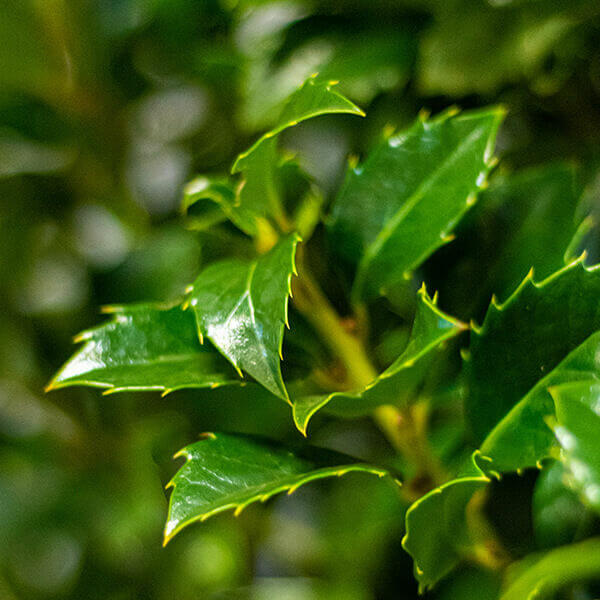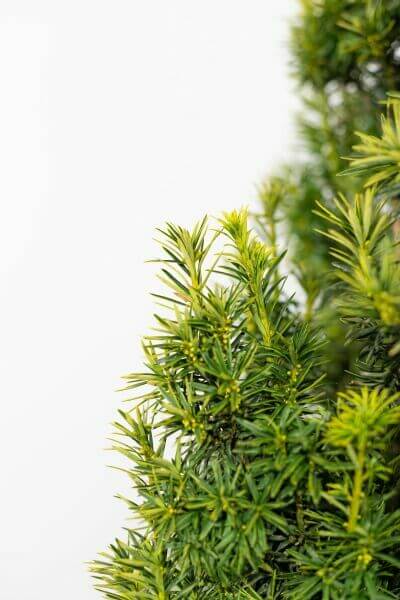Hedging Plants For Architectural Interest
Improve your garden's attraction with lavish hedge ranges such as Yew (Taxus), Thuja, Laurel, Photinia, and Bamboo, celebrated for their structural stability and ecological advantages.
Yew and Thuja provide evergreen protection and winter durability, while Laurel uses fast development and broad, fragrant leaves.
Photinia adds seasonal beauty with its vibrant red foliage, and Bamboo provides a low-maintenance, peaceful atmosphere.
These hedges enhance air quality, decrease noise, and produce tranquil, personal spaces.
Correct planting, spacing, and maintenance guarantee vigorous development and ecological harmony.
Explore how these lush ranges can raise your garden's beauty and well-being.
Secret Takeaways
Change Your Garden With Lush Hedge Ranges
- Select Yew for its dense, evergreen development and unrivaled durability.
- Go with Laurel for its quick growth and broad leaves, guaranteeing quick personal privacy.
- Pick Photinia for its dynamic seasonal foliage, which turns a striking dark red.
- Utilize Bamboo for a low-maintenance, winter-hardy hedge with aesthetic appeal.
- Area plants 2-3 per meter and prune frequently for optimum growth and health.
Popular Hedge Plants
When transforming a garden with lush hedge varieties, it's important to think about popular hedge plants such as Yew, Thuja, Laurel, and Photinia due to their distinct qualities and advantages.
Yew (Taxus) is extremely respected for its durability and dense, green development, making it a prime option for sustaining landscapes.
Thuja is noted for its evergreen foliage and robust winter resilience.
Photinia adds seasonal vibrancy with red leaves that darken over time, creating vibrant visual appeal.
Laurel uses quick development and aromatic, broad leaves, suitable for quick privacy.
Additionally, Bamboo is an outstanding choice for ambiance, offering a low-maintenance, winter-hardy alternative that boosts the garden's aesthetic with its stylish, swaying canes.
These selections deal with a range of horticultural needs and preferences.
Benefits of Garden Hedges
Garden hedges offer a multitude of advantages, making them an important addition to any landscape. These natural barriers are affordable to implement and supply considerable wind security, enhancing air blood circulation and contributing to noise decrease. The dense foliage of hedges like Thuja and Beech guarantees privacy by blocking exposure, creating a serene and remote environment.
Hedges also play a vital function in microclimate regulation, offering a stable environment that fosters plant development and lessens temperature variations. Their elaborate leaf structures filter pollutants, enhancing air quality and adding to a much healthier garden environment.
Furthermore, hedges master sound reduction, soaking up and deflecting sound waves to lower ambient sound levels. This dual performance of providing both acoustic and visual privacy improves the total tranquility and visual appeal of any garden.
Planting and Maintenance Tips
For a successful hedge, careful preparation of the planting area is vital. Ensure the soil has appropriate pH and drain to support strong root development.
Space the plants properly for the picked species. Water the hedge often throughout its preliminary growth phase, adjusting as required with seasonal modifications.
Implement a methodical bug control and illness prevention strategy, using natural or chemical treatments when necessary. Frequently examine for aphids, termites, and fungal infections.
Apply mulch to maintain wetness and reduce weeds. Seasonal pruning promotes dense growth and air flow, vital for plant health.
Following these standards will assist you cultivate a vibrant, well-kept hedge that boosts the appeal of your garden.
Spacing and Trimming Guidelines
Spacing and Trimming Guidelines
Proper spacing and trimming are crucial for cultivating healthy, visually appealing hedges. Appropriate spacing ensures each plant receives sufficient nutrients, light, and airflow.
Follow these standards for optimal hedge upkeep:
- Spacing: Position hedge plants 2-3 plants per meter to motivate robust development.
- Pruning Techniques: Regular pruning is essential for maintaining desired hedge height and shape. Cut brand-new development in summertime and cut back older wood during winter.
- Seasonal Care: Change cutting approaches and schedules according to seasonal requirements to make sure plant health.
- Hedge Height: Frequently screen and trim to maintain the wanted hedge height and attain consistent aesthetic appeals.
Adhering to these steps will guarantee your hedge grows, improving both the appeal and functionality of your garden.
Picking the Right Hedge
Selecting the Right Hedge
Selecting the appropriate hedge includes assessing factors such as fully grown height, foliage density, and environmental resilience. Effective hedge plant selection needs comprehending each species' development characteristics and site-specific flexibility.
For instance, Yew (Taxus) offers exceptional longevity and thick growth, while Thuja is significant for its winter strength. Furthermore, thinking about maintenance requirements is vital; fast-growing species like Laurel or Privet need regular cutting, whereas low-maintenance options like Bamboo or Ivy may be preferable for those looking for very little upkeep.
Ecological factors such as soil type, light schedule, and moisture conditions ought to likewise guide the choice procedure. This cautious technique ensures the selected hedges will thrive, offering both visual and functional advantages to the garden landscape.
Delivery and Planting Recommendations
To guarantee your hedge plants flourish, they need to be delivered by specialized couriers and planted immediately upon arrival.
Follow these necessary steps for successful planting:
- Soil Preparation: Enhance the soil with natural matter to enhance drainage and nutrient content.
- Planting Depth: Produce a trench two times the width and equivalent to the depth of the root ball.
- Watering Strategies: Water thoroughly after planting, keeping the soil consistently damp however not filled.
- Mulching: Apply a layer of mulch to maintain moisture and reduce weeds.
Consumer Assistance and Service
Given the essential role of prompt help in horticultural pursuits, our customer support team is offered 6 days a week through telephone, e-mail, and social networks to use skilled advice and swiftly deal with any concerns. Their commitment to quick reaction times guarantees client fulfillment by fixing questions connected to plant health, ideal planting techniques, and maintenance schedules.

----------------------
Within 24 hours
This comprehensive support group, strengthened by an excellent 9.3/ 10 consumer rating, highlights our dedication to boosting the gardening experience for every client.
Frequently Asked Questions
For How Long Does It Take for Hedge Plants to Establish?
Hedge plants typically require one to three years to become completely established, with the precise duration varying by species and growing conditions.
Effective care during this critical duration is necessary for robust development. Constant watering, vigilant weed control, and appropriate fertilizer application are pivotal in promoting strong root advancement.
For instance, fast-growing types like Laurel might establish quicker, while slower-growing varieties such as Yew might take longer. Thorough upkeep accelerates the establishment process, leading to healthy and dense hedges.
What Are the Best Hedge Plants for Privacy?
The concern of the finest hedge plants for personal privacy involves evaluating evergreen and deciduous alternatives.
Evergreen hedges like Thuja, Laurel, and Cypress supply year-round coverage, ensuring constant personal privacy.
In contrast, deciduous hedges such as Beech offer seasonal personal privacy, shedding leaves in chillier months.
Key upkeep suggestions for privacy hedges consist of routine cutting, fertilizing in spring, and proper spacing-- typically 2 to 3 plants per meter.
In addition, consistent watering and diligent weed elimination are essential for promoting healthy, thick development.
Can Hedge Plants Attract Wildlife to My Garden?
Yes, hedge plants can bring in wildlife to your garden by providing necessary benefits like shelter, food, and nesting sites, consequently enhancing regional biodiversity. Yew, holly, and laurel are excellent for drawing in birds, while ivy supports a variety of bugs.
Nevertheless, it is necessary to keep in mind that there are some disadvantages, such as increased upkeep to manage insects and routine upkeep. Thoroughly selecting and preserving hedge ranges can help stabilize these downsides and benefits, ultimately promoting a vibrant and sustainable environment in your garden.
Exist Any Flowering Hedge Plants Available?
Yes, there are flowering hedge plants offered that can boost the beauty of your garden.
For example, Elaeagnus, likewise called Olive Willow, produces fragrant white flowers in the fall, adding a touch of beauty.
Photinia, another popular option, showcases lively red leaves that mature into a rich green, producing a vibrant visual effect throughout the seasons.
To ensure these plants flourish, it's important to practice correct pruning techniques and seasonal maintenance, such as trimming brand-new development in the summer season and cutting back in the winter.
These measures will help preserve the health and aesthetic appeal of your flowering hedges.
How Do I Prevent Insects in My Hedge Plants?
To avoid insects in hedge plants, utilize natural insect control approaches and keep correct hedge care. Present helpful pests like ladybugs, which victimize damaging bugs, to develop a well balanced environment.
Frequently check your hedges for indications of invasion and without delay get rid of any afflicted parts to avoid the spread. Guarantee the health of your hedges by applying balanced fertilizers and providing adequate water.
Make use of mulching to maintain soil wetness and appropriate spacing to decrease plant stress and promote robust development. These practices jointly help in reducing pest concerns and keeping a healthy hedge.
Conclusion
In essence, selecting the right hedge ranges such as Yew, Thuja, and Laurel can change any garden into a relaxing haven. These plants supply year-round plant, enhance aesthetic appeal, and deal practical benefits like sound reduction and wind protection.
Correct planting methods, accurate spacing, constant watering, and seasonal trimming are vital for optimum growth.
Dependable shipment services and professional customer assistance ensure a smooth experience from purchase to planting, making it simpler than ever to raise your outdoor space.
Garden hedges use a wide range of Additional info advantages, making them an important addition to any landscape. These natural barriers are cost-effective to carry out and provide substantial wind protection, boosting air circulation and contributing to noise reduction. The thick foliage of hedges like Thuja and Beech ensures privacy by blocking exposure, developing a remote and tranquil environment.

Pruning Techniques: Routine pruning is necessary for keeping preferred hedge height and shape. Trim brand-new development in summer and cut back older wood throughout winter.